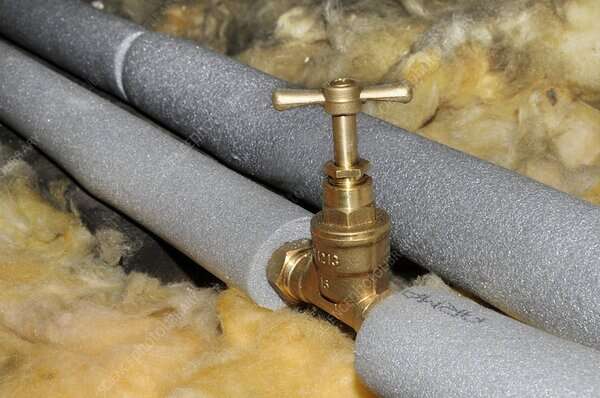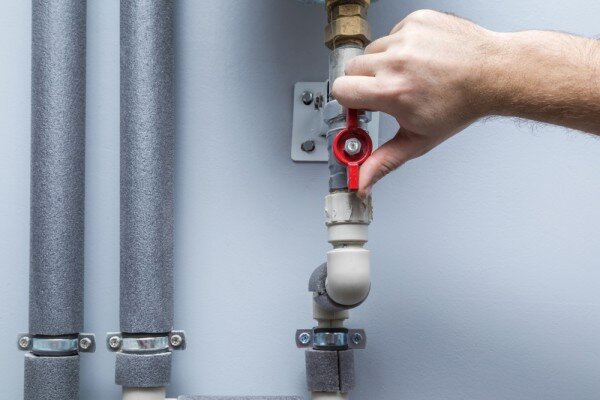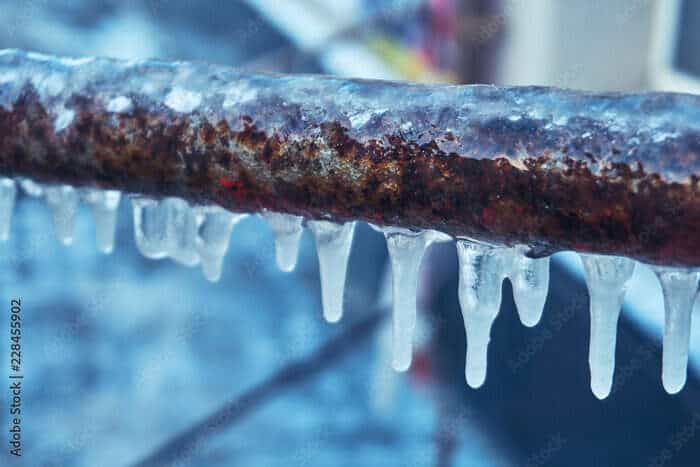It’s January 2024, and here in the United States, almost everywhere is being hit hard by a big freeze. That means nearly everyone is wondering how to keep your pipes from freezing in this kind of weather! Well, here are 8 of the best ways to protect your home from freezing, according to the water damage restoration experts, Cleaner Guys.
Why water damage restoration experts? Because the reason to fear frozen plumbing is because of water damage. These are the guys who clean it up every day. If the water in your pipes freezes, it expands, and it can crack or burst the pipe it’s in! Then all the water gushes out, damaging your walls, ceilings, and floors. Cleaner Guys deals with water damage cleanup all the time because homeowners don’t properly winterize their homes.
So, how do you keep that from happening? Read on.
Table of Contents
- 1: Insulate, insulate, insulate!
- 2: Keep the heat on.
- 3: Slow dripping.
- 4: Water shutoff awareness.
- 5: Disconnect hoses.
- 6: Close water supply to exterior faucets.
- 7: Check faucets.
- 8: Know who to call.
- Frequently Asked Questions
- More Resources
1: Insulate, insulate, insulate!
The best way to keep the water in your plumbing from freezing is to insulate it from the cold. Pipe insulation from the hardware store will do the job best, but in a pinch, you can also use towels and duct tape, if you have to. The point is to keep the cold from your pipes.
Insulate any pipes you can access that may be exposed to the cold. This includes any pipes and faucets outside, any plumbing under your home (if you have a crawlspace), and any plumbing in your attic, if applicable. If your water heater is in the attic, pay special attention to insulating the pipes coming out of it — you don’t want your hot shower to suddenly go icy cold because of a frozen water heater pipe!

2: Keep the heat on.
Yes, the bills will go up a bit. But it’s better to keep the heat on during freezing weather, and have higher bills… than to pay thousands of dollars in water damage restoration. Trust us, we know. If you can control where the heat goes in your home by opening and closing vents, you can make your home’s exterior rooms the warmest, which helps. Plumbing in exterior walls is the most likely to freeze.
Opening your cupboards is another good way to make sure the heat reaches your plumbing. On top of that, KHOU also recommends leaving the hatch to your attic open, if you want to be extra sure of keeping your attic warm enough. We think this is a good idea, and one not many would think of!
3: Slow dripping.
Take the time to go through your home and make sure all the sink faucets and showers are turned on to a slow drip. One drip every 3-5 seconds is fine. This will also increase your bills a little bit during the freezing weeks. But again, it’s better than thousands of dollars of water damage repair. Keeping even a small amount of water flowing through your plumbing can really help make sure that even if they partially freeze, they don’t freeze completely.
4: Water shutoff awareness.
Make sure that you and every responsible person in your home know where the water shutoff is. If a pipe does freeze and burst, despite everything you’ve done, then you want to be able to stop the water as quickly as possible. Shutting off the water quickly often means the difference between hundreds of dollars of water damage restoration, and thousands.

5: Disconnect hoses.
We also recommend unscrewing your hose lines from the hose bib connection itself. Water can potentially move up the hose and into the hose bib, freezing there and causing a burst. This is a particularly sneaky cause of water damage because it’s often not discovered for months. Water can freeze in a hose faucet, and then in spring, when the homeowner tries to use the hose, the frozen water in the spigot ruptures, causing water damage inside and outside.
6: Close water supply to exterior faucets.
Some exterior hose bibs have a water supply shutoff inside the house. If you can locate one, we recommend also shutting off the water supply to the hose spigot entirely — just to be safe.
7: Check faucets.
We recommend checking for possible pipe freezes at least once a day during the freeze. Do this by slowly turning each sink faucet all the way on from a slow drip, to see if the water comes out fully. If you turn the water all the way on, and the flow is still slow, weak, or stopped entirely, you probably have a freeze.

8: Know who to call.
Lastly, we highly recommend having the phone number of your plumber and water damage restoration team on hand! If you do end up with water damage due to freezing weather, the faster you get it cleaned up, the less hassle and money it’ll be for you. And there’s hardly a faster way to stop the problem than having your plumber’s phone number written down somewhere easy to find.
If you’ve never had to use a water damage restoration company before, use this resource to help you find one you can trust. Have their number written down too. If you live in Western Washington State, we highly recommend writing down Cleaner Guys’ number! We’re the only water damage restoration company in the area that boasts award-winning service.
Frequently Asked Questions
What temperature should your house be during a freeze?
We recommend setting your heat to no lower than 65 degrees Fahrenheit (other experts recommend the same thing). It’s even better to keep it warmer, such as 70 degrees Fahrenheit. Don’t forget to keep cupboard doors open, to allow heat to get to the pipes in your walls!
Will pipes freeze in one night?
Pipes can freeze in a matter of hours, so yes, they can freeze overnight. We highly recommend following all the steps outlined above throughout the night to prevent plumbing freezing in the night.
How do I know if a pipe has burst?
Usually, you’ll be able to tell a pipe has burst by the water flowing out of the wall, the floor, or the ceiling. Other signs of a possible frozen pipe are dripping or gurgling sounds inside a wall, bubbling or water stained drywall or flooring, and water not flowing properly — or at all — out of any of your faucets. See more important signs of burst pipes here.
Will frozen pipes thaw on their own?
Frozen pipes CAN thaw on their own, but it is dangerous to leave them that way and hope they do. If you can get access to the frozen section of the pipe, applying indirect heat can help, such as using a hair dryer from a couple of feet away.
More Resources
Have questions about what the water damage repair process would look like? Read this! ➜
Can water damage from frozen pipes cause mold? Find the answers here. ➜
What happens if you touch mold? Learn what you’re triggering when you touch mold. ➜
Disclaimer: This article is for informational purposes only. No part of this article is medical or legal advice, and may not be used as such. For all serious medical matters, consult your doctor. For all serious legal matters, consult your legal advisor. This article contains Cleaner Guys’ experience and opinions only.


